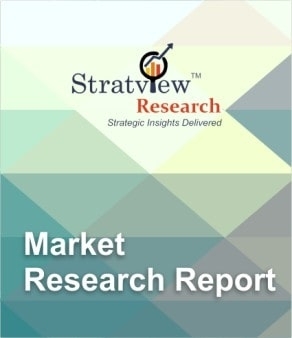Butyl Rubber Market Study Offering Insights on Latest Advancements, Trends & Analysis from 2023-2028

The butyl rubber market is estimated to grow at a CAGR of 5.0 % over the next five years to reach US$ 5.2 billion in 2028.
Butyl rubber is a synthetic elastomer with unique properties that make it ideal for a wide range of applications. It is made by polymerizing isobutylene with a small amount of isoprene, resulting in a material that is impermeable to gases, water, and chemicals. This makes it ideal for use in a variety of industries, including automotive, construction, and pharmaceuticals. In this article, we will discuss the global butyl rubber market and its key drivers, challenges, and trends.
The butyl rubber market is estimated to grow at a CAGR of 5.0 % over the next five years to reach US$ 5.2 billion in 2028. The increasing demand for butyl rubber in the automotive and construction industries is driving the market growth.
The automotive industry is the largest consumer of butyl rubber, accounting for more than 50% of the total demand. Butyl rubber is used in the production of tires, inner tubes, and other automotive components due to its excellent air retention, low gas permeability, and resistance to heat and abrasion. The growth of the automotive industry, particularly in emerging economies such as China and India, is expected to drive the demand for butyl rubber in the coming years.
The construction industry is another major consumer of butyl rubber, where it is used in waterproofing and sealing applications. The increasing construction activities, particularly in the Asia Pacific region, are expected to drive the demand for butyl rubber in the construction industry.
Request a sample here:
https://www.stratviewresearch.com/Request-Sample/3259/butyl-rubber-market.html#form
One of the major challenges faced by the butyl rubber market is the volatility in the raw material prices. The price of isobutylene, the key raw material used in the production of butyl rubber, is highly volatile and subject to fluctuations due to supply-demand imbalances and other factors. This makes it difficult for manufacturers to predict and manage their production costs, which can affect their profit margins.
Another challenge faced by the butyl rubber market is the increasing competition from other synthetic rubbers, such as EPDM and SBR. These rubbers offer similar properties and are less expensive than butyl rubber, which can limit the market growth.
The increasing demand for bio-based butyl rubber is a key trend observed in the market. Bio-based butyl rubber is made from renewable resources, such as biomass or sugarcane, and is considered more sustainable and environmentally friendly than traditional butyl rubber. The adoption of bio-based butyl rubber is expected to increase in the coming years, driven by the increasing focus on sustainability and environmental regulations.
Another trend observed in the market is the increasing use of butyl rubber in the pharmaceutical industry. Butyl rubber is used in the production of stoppers and seals for pharmaceutical packaging due to its excellent chemical resistance and low extractable levels. The growth of the pharmaceutical industry, particularly in emerging economies, is expected to drive the demand for butyl rubber in this application.
In terms of regions, Asia-Pacific is the market that is likely to have increasing enormous traction in terms of revenue share over the forecast period. This growth is attributed to the thriving automotive and pharmaceutical sectors, growing income levels, easy availability of cheap labor, along with technological innovations in the field. Also, rapid industrialization, fast evolution in the manufacturing infrastructure, coupled with the presence of prominent players are further contributing to the market expansion in the APAC region.
Key Players
The market is highly populated with the presence of several local, regional, and global players. Most of the major players compete in some of the governing factors including price, product offerings, regional presence, etc. The following are the key players in the butyl rubber market:
- Eastman Chemical Company
- SR Corporation
- Kiran Rubber Industries Pvt. Ltd.
- Lanxess AG, ExxonMobil Chemical
- Michelin Corporation
- Reliance Industries Ltd.
- The Goodyear Tire & Rubber Products Inc.
- Timco Rubber
In conclusion, the global butyl rubber market is expected to grow at a steady pace in the coming years, driven by the increasing demand from the automotive and construction industries. However, the market faces challenges such as volatility in raw material prices and competition from other synthetic rubbers. The adoption of bio-based butyl rubber and the increasing use in the pharmaceutical industry are key trends observed in the market, which are expected to drive the market growth in the coming years.